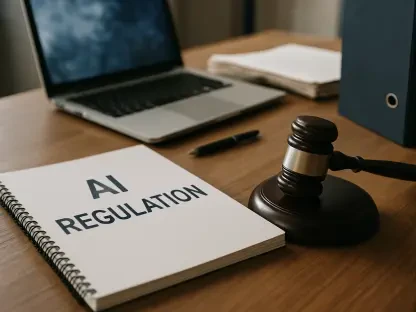The latest overhaul of Form I-9 by the U.S. Citizenship and Immigration Services (USCIS) has important implications for companies across the nation. This document is crucial for verifying employee identity and work authorization, and the recent changes announced on April 2 have generated significant discussion in the corporate world. Organizations need to be aware of these modifications and understand their potential impact on compliance protocols and employee onboarding processes. The reintroduction of the term “alien authorized to work” replaces “noncitizen,” a switch from the terminology adopted during the Biden administration’s efforts to remove what some regarded as dehumanizing language. This reinstatement signals a shift in the administrative philosophy under the Trump era, and employers must remain vigilant to stay compliant.
Terminology Shift: Alien vs. Noncitizen
The transition from “noncitizen” back to “alien authorized to work” marks a significant change in how employee work authorization terminology is framed. When the Biden administration introduced “noncitizen” in 2023, it was part of a broader initiative to create a more inclusive and humane language. However, criticism from Republican circles argued that the change sowed confusion and ambiguity in legal contexts. The reinstatement of “alien” aims to bring back clarity and traditional legal interpretations. It’s essential for employers to recognize this shift and adjust their internal documentation processes accordingly.
Existing versions of Form I-9 dated August 1, 2023, remain valid until May 31, 2027, offering a transition period for companies to adapt to the new terminology. However, the impact goes beyond mere semantics; it influences how employee documentation is framed and processed. Employers should ensure their HR departments and compliance officers are thoroughly familiar with the updated terminology to avoid any legal hiccups. This change also signifies a broader pattern of alterations in immigration policy reflective of differing administrative priorities, emphasizing the need for companies to stay informed and adaptable to such shifts.
Remote Verification Procedures
While the terminology has reverted, one continuity from the Biden administration is the option for remote document verification through live video. USCIS maintains this procedure for employers enrolled in E-Verify, underscoring the agency’s endorsement of technology in streamlining compliance. This method, introduced under the Biden administration, has gained traction due to its convenience and the COVID-19 pandemic’s impact on workplace interactions. For organizations utilizing this alternative procedure, it is crucial to ensure that their practices meet the standards required by USCIS.
Employers must remain updated with the operational details of remote verification, such as ensuring all employees have access to necessary technology and understanding the guidelines on maintaining video records and securing digital documents. This practice not only helps in compliance but also speeds up the onboarding process, offering a significant advantage in the current competitive job market. Despite the Trump administration’s focus on increasing inspections and more stringent enforcement, remote verification represents an innovative approach to fulfilling Form I-9 requirements effectively.
Increased Scrutiny on Compliance
With the Trump administration signaling a robust increase in inspections, the importance of adherence to Form I-9 regulations has never been more critical. Companies must evaluate their electronic Form I-9 systems to ensure they adhere to federal regulations and are fully equipped for potential audits. The emphasis on compliance highlights the administration’s strategy to intensify scrutiny and enforcement regarding worker authorization requirements. Non-compliance could lead to severe penalties and legal vulnerabilities, underscoring the need for diligent adherence to these regulations.
Employers should conduct regular internal audits of their Form I-9 procedures, identifying and rectifying any discrepancies or shortcomings. Training programs for HR personnel and compliance officers on the latest updates and inspection preparedness can prove beneficial. Additionally, seeking legal guidance to navigate these changes can help mitigate risks and enhance the overall compliance landscape. This proactive approach is crucial for employers to ensure that all processes align with the USCIS requirements, safeguarding against unexpected violations and fostering a robust, compliant workforce management system.
Adapting to Broader Policy Debates
The revisions to Form I-9 reflect broader debates in immigration policy and enforcement practices, encapsulating shifts in administrative philosophies. The balance between maintaining remote verification methods and reverting to traditional terminology illustrates the nuanced landscape that employers must navigate. Staying updated with these changes is crucial for employers to ensure smooth operations and compliance within the ever-evolving regulatory environment.
Employers must adopt a forward-thinking strategy, recognizing the implications of such shifts on their workforce and operational protocols. Continuous education on immigration law changes, investment in compliance technologies, and fostering an adaptive HR culture can equip organizations to respond effectively to ongoing policy fluctuations. As administrative priorities shift and immigration enforcement practices evolve, companies that stay informed and proactive will be better positioned to maintain compliance and mitigate any disruptions caused by regulatory alterations.
Conclusion: Preparing for the Future
The transition from “noncitizen” back to “alien authorized to work” signifies a notable shift in how work authorization terminology is framed in the U.S. Introduced by the Biden administration in 2023, “noncitizen” aimed to foster more inclusive and humane language. However, Republicans criticized the term for causing confusion and ambiguity in legal contexts. The return to “alien” strives to restore clarity and traditional legal interpretations. Employers should recognize this change and update their internal documentation processes accordingly.
Forms I-9 dated August 1, 2023, will remain valid until May 31, 2027, providing a transition period for companies to adapt to the new terminology. This change impacts more than just terminology; it affects how employee documentation is framed and processed. HR departments and compliance officers must familiarize themselves with the updated terminology to avoid legal issues. This shift reflects broader changes in immigration policy that highlight the different priorities of various administrations. Companies need to stay informed and adapt to these changes to remain compliant.









